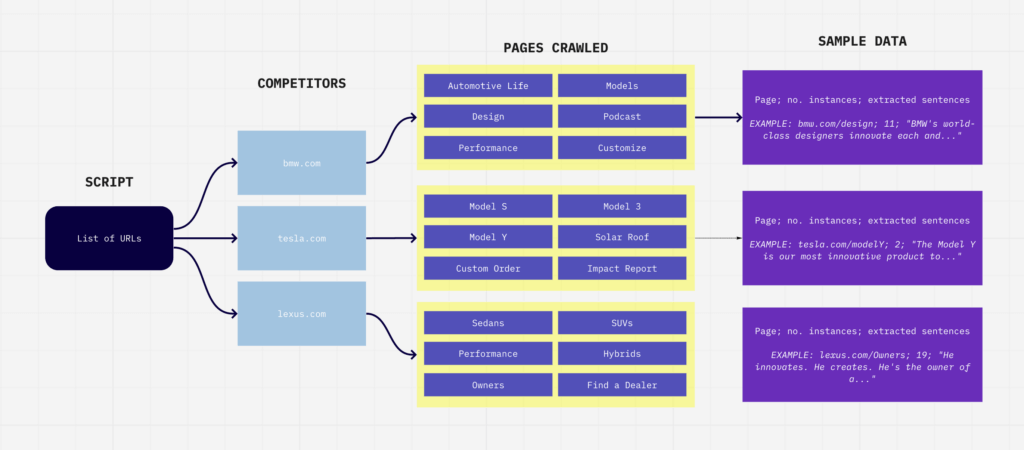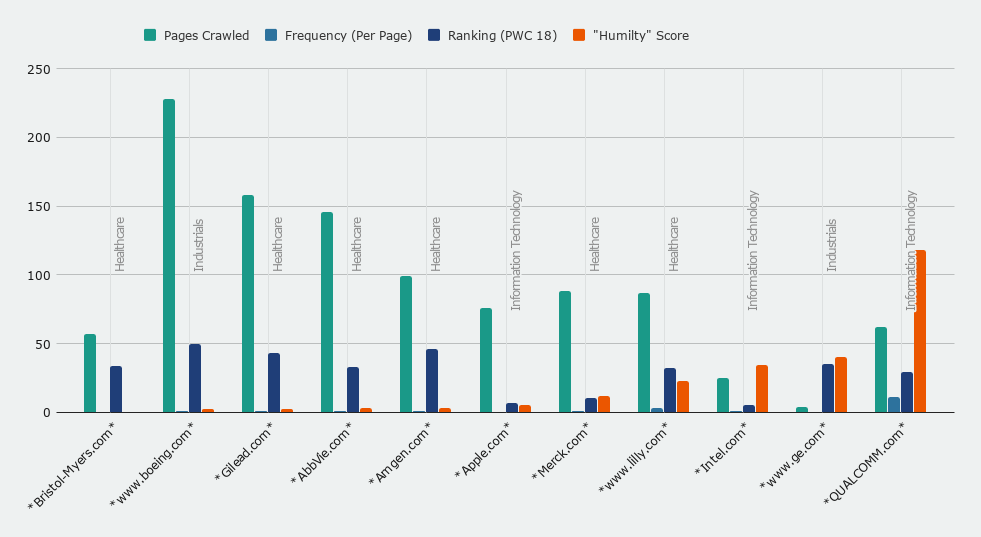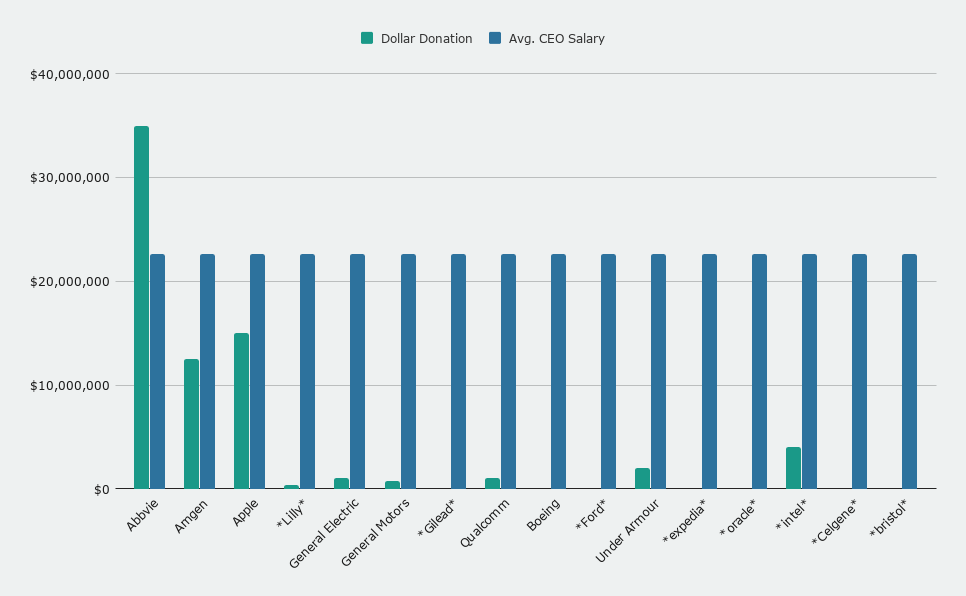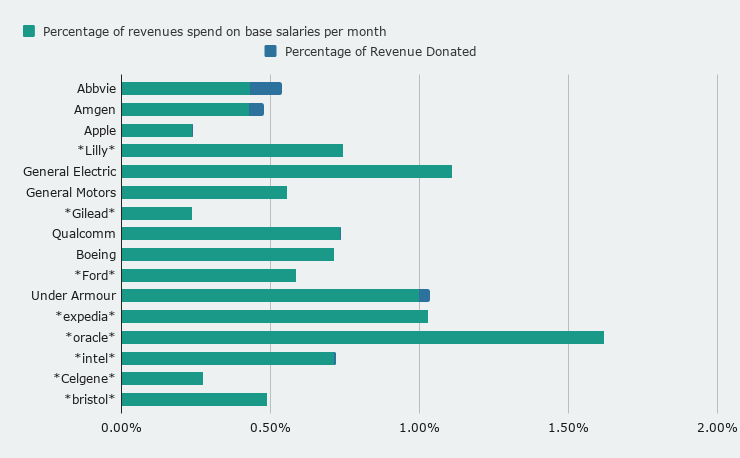“There exists, for everyone, a sentence – a series of words – that has the power to destroy you.”
I know it’s cliché to start a blog post with a quote, especially one as dramatic as this one from sci-fi writer Philip K. Dick. Still, it rings true.
Brands and organizations both thrive and die in competition. If you stand out, you coast. If you fail to distinguish yourself, you drown. Having a unique line of offerings is important, and cosmetic details like logo, iconography and color should stick out from the crowd. But it’s words that resonate. The value propositions, the slogans, and the marketing messaging you wrap your brand in – these can hit harder with audiences more than subtle visual design and pricing variations.
Put simply: branded messaging is your first impression for customers, clients, supporters, and thought -leaders. Don’t f*** it up.
Automating brand messaging data intake
Voice, tone, taglines, vision statements, readability, positioning, value props, consistency… the list goes on. Marketers, UXers, creatives and consultants alike have gone through the painstaking process of sifting through competitor websites digging for words and phrases to make informed decisions. To help your brand or client stand out, doing this due diligence is a must. It’s critical for finding an unclaimed slice of the messaging pie, and identify unique tactics, patterns, and trends your competitors or comparators fail to leverage.
To make capturing this data easier, we built a script that can look at a homepage plus every internal page listed on that homepage to:
- Make a count of every instance a keyword or phrase is found.
- Extract the sentence where that keyword or phrase is found.

For those interested, check out the underlying code here.
Examples and applications
How the NBA and NHL players associations address COVID
For example, let’s take the players’ associations of two major league sports: the NBA and NHL. Given we’re in the throes of a global pandemic, it’s essential that the organizations created to protect players weigh in on the matter. If I’m on the corporate side of the MLB or the NFL, maybe I’m curious about how other leagues are aligning or messaging around COVID. I simply enter the two competing websites (nbpa.com and nhlpa.com) and the keyword, which in this case is “COVID,” and what I get in return is something like this.
A (very very) cursory glance at this data reveals three things:
- Both take ample opportunities to discuss COVID, but the NBA does so roughly three times as much, mentioning the disease an average of 1.4 times per page.
- The NBA tends to focus more on scientific reporting, strategies for safety, and player health reports, while the NHL focuses more on the emotional impact of the disease, i.e., zeroing in on families and charitable programs.
- In both cases, most references are part of news articles or blog posts. That is, neither has a dedicated page or resource focusing solely on the pandemic, and its impact on the players. Dedicated site real estate to the subject would likely improve SEO.
There are, of course, more insights to glean. This sample was just to show that running a single script for 20 seconds or so and skimming Excel can reveal useful information relevant to your client. In this case, there’s an opportunity to create a dedicated portal for COVID information, align yourself with an emotional or practical camp, and understand how often you should or should not be referencing the subject at hand.
Measuring corporate humility by seeing who actually innovates vs. who just claims to innovate.
What happens if we scrape about a dozen of the Fortune 1000’s websites for the word “innovation.” I scraped 1,033 pages and extracted 1,484 instances of the word “innovation.” I then measured how often they talk about innovation against their actual PwC Innovation Ranking to calculate a humility score. In other words, do you just talk the innovation talk, or are you actually innovating?

You can view the sample data here. You can see that a company like Boeing has a dense website, and use the word “innovation,” “innovative,” “innovate” or “innovator” often, but still have a low innovation ranking. This is what gives them a low humility score. Versus a company like Qualcomm, which is a notoriously innovative company, yet its frequency of using the word is low. They let their work speak for itself. This is what gives them a high humility score.
There are SEO implications here, but the real insight is on how you communicate your brand’s personality. Are you the self-confident type, or are you more humble, letting your work speak for itself? This information could and should lead organizations to rethink how they use characterizing words, such as “innovation,” and ensure they align with larger messaging strategies.
Corporate COVID donations versus their spending trends
And to tie the previous two examples together, I used this underlying script to extract corporate donations to COVID-related causes from the Chamber of Commerce’s Corporate Aid Tracker and merged it with additional datasets containing corporate spending information. With this, I could measure donations against CEO salary, which – to no one’s surprise – was painful to see.

Or you can explore how employees are paid versus how much the company gives.

I encourage you to explore the data for yourself (second tab). There are a number of different data points captured from our script, analyzed using Excel, and visualized to generate new insights.
Next Steps
Right now, we’re in the prototyping phase. The foundational technology we leverage has limitations, like the inability to scrape data from certain websites with extra security; and insights aren’t programmatically generated, but rather created using a little Excel wizardry. That said, this is an additional feature we’re looking to integrate into our broader ecosystem of analysis tools in the near future.
Get in touch
Of course, no blog post is complete without the obligatory call to action. If your organization is looking for marketing services, brand development, or a team that can solve just about any problem with code and a touch of ingenuity, holler at us!
For comments or questions about the keyword scraper, holler at me – jstrupp@taoti.com. You can also check out more of my work at joshstrupp.com.
If you’re interested in working together, shoot an email to hello@taoti.com. We promise there are zero robots on the other end.